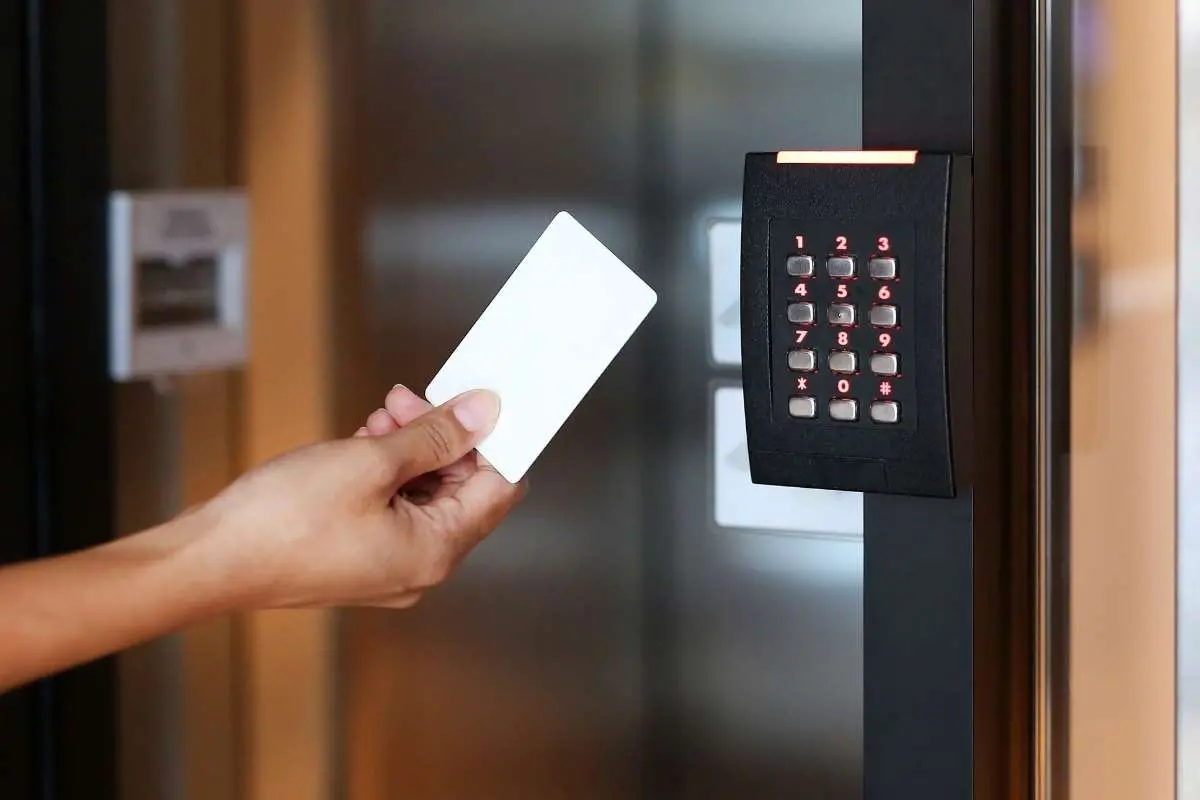
How Do Proximity Readers Work?
Proximity Readers provide the first line of defence to many secure entryways and rooms. They are smart, programmable, and most importantly, dependable. But how do proximity readers work?
As a well-established technology, engineers and researchers honed and innovated card readers over the decades since their inception. They currently play a huge role in modern society, from contactless payments to commercial hotel chains, to secure government facilities. Though each system varies over time and between each required usage, every proximity reader system still retains the same basic components.

Proximity Reader Components
1. Key Fobs and Access Cards
In proximity reader systems, each authorised person receives an access card or coin-sized key fob. These fobs and cards contain a small antenna wire encased within the plastic, along with a small, encoded circuit. The circuit gives each card a unique code, and a short distance to transmit it. Therefore, they can communicate with a card reader from within a lanyard, wallet, or even within a pocket.
Fobs and cards are designed with mobility and flexibility in mind, so are light and replaceable. Unlike conventional keys, cards and fobs use unique codes, which can be cancelled and replaced if lost or stolen. Unlike conventional code-lock systems, they don’t rely on memory, removing human error from the equation.
2. The Reader Itself
These devices sit beside the lock on secure doors and entryways. They use electromagnetic fields to detect cards or fobs and verify them via radio frequency, through a technology called Radio Frequency Identification (RFID).
As they connect via transmitted frequency and not through a mechanical opening, they prove far less vulnerable to tampering and lockpicking than a standard lock and key system.
3. The Access Control Panel
In the place of a standard lock’s pins and bolts, the access control panel communicates electronically with the proximity reader. It will open the lock electronically whenever the reader says so. Depending on the facility’s security requirements, the access control panel may be battery-powered or wired into the mains. In larger complexes like hotels or university accommodation, it might be impractical to wire each control panel individually. They therefore often use battery-powered panels in larger scale operations. While they remain effective and self-contained, battery-powered access control panels require regular checks and battery replacements to ensure uninterrupted operation.
4. The Access Control Server
The access control server adds optimisation and personalisation to each proximity reader system, as the owners can customise accessibility remotely from a PC or even via mobile app. The access control server and the access control reader constantly communicate, allowing immediate changes and records of access privileges. Through the server, the system manager can upgrade or downgrade privileges on the fly, deleting or adding different access identifiers with ease.
Logging and analysing each entry in the server also provides unique advantages in predicting employee, client, or public behaviour. Through cataloguing entry records, the access control server owner can create data graphs detailing the flow through their proximity reader controlled doors. They can thereby decide where to up security, or even work out their employee hours. Access control servers can help with praising and rewarding employees for punctuality and overtime or hold them accountable for lateness.
These additional perks stack on top of the fundamental role in deterring intruders and recording failed attempts to gain access.
How Do Proximity Readers Work in Modern and Future Workplaces?
Proximity readers provide smart, versatile, secure control for a range of expanding commercial industries. From leisure centres to university campuses, from small scale offices to confidential research laboratories, proximity readers offer a responsive entryway access check that it immune to lockpicking, and any other physical assault aside from taking a door off its hinges.
In addition, the focus on ‘proximity’ as opposed to contact, provides a key benefit in the modern era. The vital distance, while a mere matter of centimetres, removes human interaction from the locking system, unlike keypads and many biometric scanners. Following increased concern over biohazards and transmittable viruses, proximity readers create a safer, more hygienic one-factor authentication method. They thereby protect employees and other door users while lowering cleaning costs.
Conclusions: How Do Proximity Readers Work Better Than Their Alternatives?
Proximity readers’ digital and mechanical processes bring distinct advantages over their predecessors. From the ancient mechanical lock and key to the 1970s throwback magnetic key card, proximity reader systems have come a long way. Their digital access analytics bring a set of tools for the information age. Their simplicity and lack of extraneous moving parts bring efficiency and reliably engineered durability. In office spaces with important or confidential areas and various levels of security required, business owners can rest assured with the well-measured benefits of proximity reader systems.

Zoë Mouter is the joint owner and director of Egress Systems, a leading provider of time and attendance solutions. With two decades of experience in the workforce management sector, Zoë collaborates with HR, payroll, and IT experts to deliver tailored solutions across a diverse range of industries, including logistics, manufacturing, retail, hospitality, education, charities, waste management, and healthcare.
Before founding Egress Systems, Zoë honed her skills over 10 years as an IT professional at global data and technology companies Experian and Egg. During this time, she worked with multinational clients such as MBNA, Morgan Stanley, and Argos, specialising in the credit card processing sector.
Zoë holds a first-class degree in English Language and Literature from Liverpool University, alongside a Masters in Viking Studies and a TEFLA certification (Teaching English as a Foreign Language to Adults). While her focus has shifted from Viking history to Nordic walking, she enjoys expressing her creativity through ceramics, often crafting unique tea and coffee pots on her pottery wheel.
